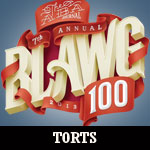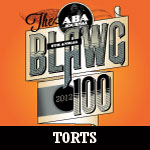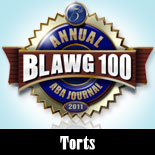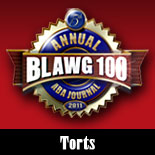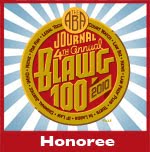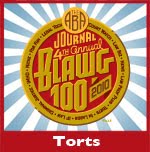Today, Abnormal Use continues its new series, “Abnormal Interviews,” in which this site will conduct brief interviews with law professors, practitioners and other commentators in the field. For the second installment, we turn to law professor Michael J. Virzi of the University of South Carolina School of Law. Virzi, a former prosecutor with the South Carolina Office of Disciplinary counsel, now teaches legal writing and chairs the South Carolina Bar’s Ethics Advisory Committee. He also practices in the areas of ethics and malpractice defense. The interview is as follows:
1. What recent developments in ethics law would you recommend that litigators be aware of in 2010?
Subpoena practice. Abuse of subpoena rules has been rampant for decades and, although there have been no rule changes, there has been increased awareness by the bench and attention to the limitations. The problem stems from the jurisdictional limits on a court’s subpoena power. A subpoena is essentially a court order. It is issued by the court; lawyers are merely granted the privilege of issuing them on behalf of the court. The abuse has been in issuing subpoenas outside the court’s jurisdiction. A lawyer cannot issue a subpoena that the court itself would have no jurisdiction to issue. The jurisdictional limit of the Circuit Courts is the State of South Carolina. Nevertheless, many lawyers will subpoena an out-of-state non-party entity (e.g., a bank) rather than an in-state representative. For Magistrate’s Court, the jurisdictional limit is the county in which the court sits. Nevertheless, lawyers often improperly subpoena out-of-county witnesses in Magistrate’s Court cases. The problem is particularly pronounced in City Courts—like Columbia, West Columbia, and Cayce—that neighbor county lines, but it has been reported in remote, rural areas as well. Finally, both Magistrate’s Courts and Family Courts have more limited subpoena power than Circuit Courts, as both courts lack extensive discovery procedures.
Specific Magistrate’s Court procedures were recently promulgated to clarify the appropriate way to reach out-of-county parties. Significantly, however, the rules and limitations did not change; they were merely clarified. A Magistrate’s Court’s jurisdiction—and therefore its subpoena power—has always been limited to the county in which the court sits. The disciplinary authorities have been aware of this for years, and the bar is starting to catch on.
2. What is the most significant ethics opinion to come out in the last year? Why is it significant?
The December 21, 2009, In the Matter of an Anonymous Member of the South Carolina Bar opinion by the South Carolina Supreme Court involved a lawyer issuing discount coupons through the lenders and real estate agents who referred business to him. The agents were soliciting clients in-person for the lawyer, something the lawyer himself is prohibited from doing under Rule 7.3(a). In 2007, Ethics Advisory Opinion 07-09 had advised that such conduct would be impermissible under 7.3(a), even though the lawyer personally does not conduct the in-person solicitation, because Rule 8.4(a) prohibits a lawyer from violating any of the Rules of Professional conduct “through the acts of another” and from “assisting or inducing another to do so.” The Ethics Advisory Committee believed that 8.4(a) prohibited a lawyer from having a surrogate solicit clients in person where the lawyer may not do so according to Rule 7.3(a).
The Court in In the Matter of an Anonymous Member of the South Carolina Bar expressly overruled 07-09, stating that the policies underlying the in-person solicitation prohibition are not compromised where the lawyer is not personally present. Because there is no “insistence upon immediate retention or importuning of the trained advocate,” in-person solicitation through a surrogate is not prohibited. The reasoning is simple, but the consequences are profound. The court essentially held that the “vicarious misconduct” prohibition of 8.4(a) does not apply to 7.3(a). The court has never previously held any of the Rules exempt from 8.4(a), nor am I aware of any other jurisdiction having done so. The court’s reasoning applies equally to ambulance drivers, triage nurses, police officers, jailers, and any other party a lawyer might use to personally solicit clients by handing out business cards or coupons in the lawyer’s stead. The court held that whether the recipient is in need of legal services is irrelevant. Because the practice is “similar in fashion to the common practice of leaving business cards for distribution” and the agents are not under the lawyer’s control (they “could have thrown away the coupons”), the court found the agent-solicitations permissible.
3. What do you think is the most overlooked ethical rule? Why is it overlooked?
Probably 7.2(b), or at least its applicability to electronic media. 7.2(b) includes the filing and record-keeping requirements for all lawyer advertising. Too many lawyers fail to realize that their web sites constitute advertising under the Rules and therefore fail to conform their sites to the specific prohibitions regarding advertising. Even when the content of online information is in conformity with the remainder of Rule 7.2, too many lawyers fail to file the materials with the Commission on Lawyer Conduct and keep copies for two years “along with a record of where and when it was disseminated” as required by 7.2(b).
4. As the general public increasingly uses the Internet and social media to communicate, how do you predict that state bars will react to the popularity of this new technology among attorneys?
Despite all the hype about how the Rules of Professional Conduct need to “catch up” with technology, I think the rules are adequate and state disciplinary authorities will simply apply them as written to online communication. I think lawyers, one by one, will continue to be shocked and amazed that their online conduct is measured against Rules 7.1 (communication), 7.2 (advertising), and 7.3 (solicitation), but regardless of the forum or medium, communicating is communicating, advertising is advertising, and soliciting is soliciting. The rules make no distinctions between print, radio, or television, and they need no special provisions for the Internet or other media. The rules distinguish only between that which is “disseminated via public media” and that which is not. If your use of Facebook is kept private among your friends, it’s not publicly disseminated. If you allow it to be viewed publicly, then it’s disseminated. Anything searchable by public search engines like Google and Yahoo! is disseminated under the rules. Linked-In and Twitter are likewise publicly disseminated. That doesn’t mean lawyers can’t use these services; it just means they are regulated when used in relation to the lawyer’s practice, as opposed to being used solely in a lawyer’s personal life.
5. If you could offer young lawyers beginning their careers one piece of advice, what would it be?
To paraphrase Polonius (Hamlet, Act I, Scene III), “Above all else, to thine own self be true.” Never let any partner, associate, client, opposing counsel, judge, or anyone else talk you into doing something you think is wrong. Never be afraid to walk away. Your fears and your needs can quickly and easily become someone else’s power over you, and those who would wield that kind of power would never wield it in your best interest.
BONUS QUESTION: What do you think is the best depiction in popular culture of an attorney facing an ethical issue?
I really enjoyed Jim Carrey’s performance as Fletcher Reede in Liar Liar. Fletcher’s son cast a spell on him, prohibiting him from lying just before Fletcher was to represent a client in her divorce hearing. He knew his client was having an affair, which would trigger a clause in her prenuptial agreement prohibiting her from receiving any of her husband’s multi-million-dollar estate. The spell prevented Fletcher from examining her or the paramour without disclosing the affair. (Ignore for a moment that he was perfectly willing to allow his client to lie on the stand — arguably, he never “faced” that issue). At one point he objected to certain testimony, the judge asked why, and Fletcher responded, “Because it’s devastating to my case!” But his best effort was at getting a continuance until after the spell was broken, which he could not truthfully tell the judge he needed. To get the continuance without lying, he went into the bathroom and beat himself up. When the judge asked who had done it, Fletcher replied, “A madman, your honor, a desperate fool at the end of his rope.” Nevertheless, the ploy failed. The best part was watching Fletcher struggle to find an honest, truthful path to victory in the case. Ultimately, he discovered that his client had lied about her age in order to get married early, a revelation that also voided her prenuptial agreement for incapacity and entitled her to half of her husband’s estate despite the infidelity.
BIOGRAPHY: Mr. Virzi teaches Legal Writing at the University of South Carolina School of Law and practices in Columbia in the areas of ethics and malpractice defense. He formerly worked as Assistant Disciplinary Counsel for the Supreme Court of South Carolina. He graduated cum laude from the University of South Carolina School of Law in 2000. He is a member of the North and South Carolina Bars and is currently the Chairman of the South Carolina Bar’s Ethics Advisory Committee. In 2009, he served on the South Carolina Bar Young Lawyers Division Social Media Task Force.






